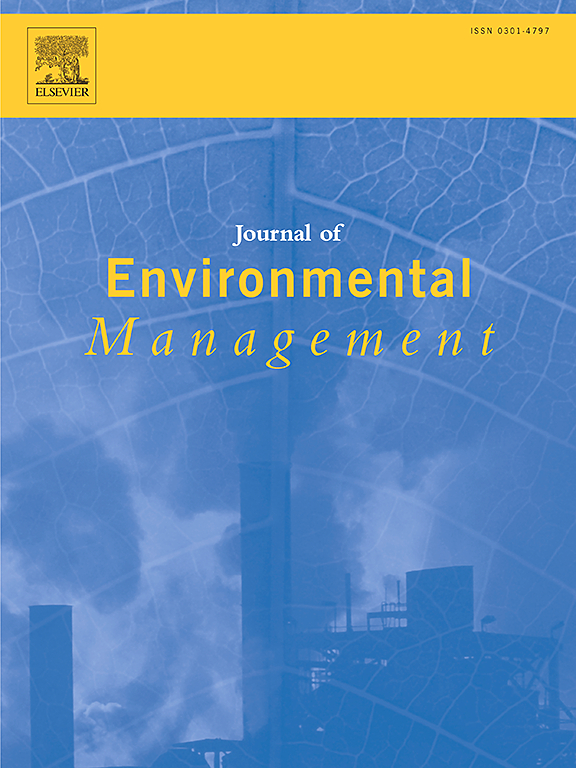利用再生骨料建造湿地,改善尾水处理。
IF 8.4
2区 环境科学与生态学
Q1 ENVIRONMENTAL SCIENCES
引用次数: 0
摘要
来自建筑行业的再生骨料可以成为建造湿地(CW)废水处理系统的有效材料。然而,植物或哪种植物是否能在使用回收骨料的 CW 中存活,目前仍是一项稀缺且亟待研究的课题。本文系统研究了不同植物种类和若干运行参数对采用不同基质(混合建筑再生骨料[MCRA]、红砖[RB]和砾石)的 CW 处理污水厂尾水的影响。结果表明,与 RB-CWs 和 Gravel-CWs 相比,含有七种植物(如香蒲)的 MCRA-CWs 对化学参数的平均去除率更高。在 MCRA-CWs 中,东方香蒲、互生香柏和黄柏的平均去除率分别为 77.58%、75.09% 和 73.16%,高于其他植物。同时,蛋白细菌在 MCRA 和 RB 中的相对丰度最高,分别为 54.98% 和 69.22%,而蓝藻则是砂砾中含量最高的(35.21%)。在夏季,当 HRT 为 3 d,C/N 比为 2.5 时,季节对水质净化的影响显著(p 4+-N),TN 为 95.01%,TP 为 84.11%。这表明,经处理的再生建筑骨料可用作化武池的基质,具有净化废水和改善环境的双重效果,从而达到 "以废治废 "的目的。本文章由计算机程序翻译,如有差异,请以英文原文为准。
Constructed wetlands using recycled aggregates for the improved treatment of tailwater
Recycled aggregates from the construction industry could be effective materials for constructed wetland (CW) wastewater treatment systems. However, whether the plants or which kinds of plants can survive in CWs with recycled aggregates or not is still scarce and urgent to study. The effects of different plant species, and several operation parameters on tailwater treatment from the sewage plants by CWs with different substrates (mixed construction recycled aggregate [MCRA], red brick [RB], and gravel) are systemically studied. The results showed that the average removal efficiencies of the chemical parameters in MCRA-CWs with seven plants, such as Cyperus alternifolius, were higher than those of RB-CWs and Gravel-CWs. In the MCRA-CWs, the average removal efficiencies of Typha orientalis, Cyperus alternifolius, and Phragmites australis were 77.58%, 75.09%, and 73.16%, respectively, which were higher than those of the other plants. Meanwhile, Proteobacteria had the highest relative abundances in MCRA and RB at 54.98% and 69.22%, respectively, whereas Cyanobacteria (35.21%) were the most abundant in the gravel. The influence of season on water purification was significant (p < 0.05) in the MCRA. Overall, water quality purification was dependent on season, HRT, and C/N, which accounted for 86.1%, 13%, and 7.1%, respectively. The highest average removal efficiencies of the MCRA-CWs were 71.98% (COD), 85.58% (NH4+-N), 95.01% (TN), and 84.11% (TP) when the HRT was 3 d and C/N ratio was 2.5 in the summer. This indicates that treated recycled construction aggregates could be used as substrates in CWs and have both wastewater purification and environmental improvement effects, thus achieving the purpose of “treating the wastes with wastes”.
求助全文
通过发布文献求助,成功后即可免费获取论文全文。
去求助
来源期刊

Journal of Environmental Management
环境科学-环境科学
CiteScore
13.70
自引率
5.70%
发文量
2477
审稿时长
84 days
期刊介绍:
The Journal of Environmental Management is a journal for the publication of peer reviewed, original research for all aspects of management and the managed use of the environment, both natural and man-made.Critical review articles are also welcome; submission of these is strongly encouraged.
 求助内容:
求助内容: 应助结果提醒方式:
应助结果提醒方式:


